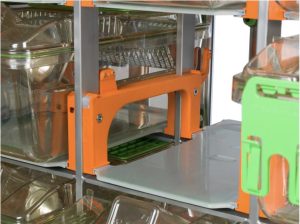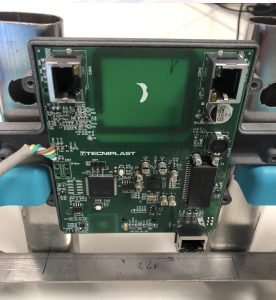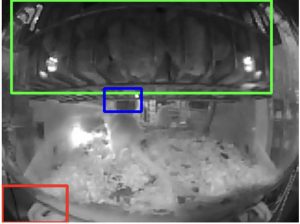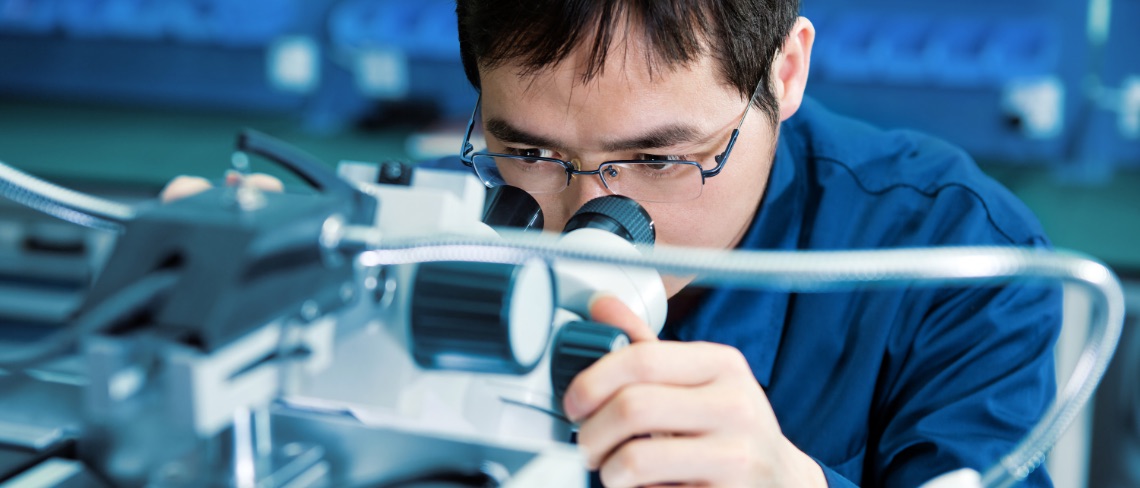How can teams bring digitalization to an industry that has strong incentives against it? It’s a tricky question, so we were glad to sit with Tecniplast, an ST customer specializing in cages and housing solutions for research institutions and biomedical organizations. Based in Italy, the company recently launched a digital ventilated cage (DVC) that relies on capacitive sensors and computer vision modules that feed information to a neural network on an STM32H7. Thanks to the introduction of digital information, researchers can monitor these cages remotely to avoid disturbing rodents and negatively impacting their behavior. It’s also possible to collect significantly more precise information, which has already led to new findings.
How did it start?
How to face a reluctant market?
The use case presented by Tecniplast is interesting because the benefits of digitalization are apparent. And yet, as the ST customer explained, cage makers and their clients prefer analog processes. Tecniplast’s digital ventilated cage is thus fairly unique because the industry seems to be fighting the move to sensors and microcontrollers. Some don’t know where to begin, while others are content with the status quo. Moreover, the millions of cages already in the field are used as arguments against the move to a digital platform. Consequently, to be convincing, a DVC must provide significant advantages and be extremely cost-effective.
How to solve challenges by shipping a first solution?

To answer these complex challenges, Tecniplast first installed a capacitive plate underneath a cage and used off-the-shelf parts to experiment with a camera system. All sensors are outside the cage to simplify developments, reduce costs, avoid disturbing the animal, and prevent an accident, such as destroying and swallowing a component. The plate tracks the rodent’s movement day and night while the camera monitors food and water levels. Since the animal moves around its cage and sometimes transports its bedding around, an image CMOS was far more reliable than alternatives, like a time-of-flight sensor that wouldn’t have been able to differentiate between a feed level and an obstruction.
After releasing its first DVC, Tecniplast learned invaluable lessons. For instance, while the company succeeded in gathering data, it was collecting so much of it that processing it in the cloud became very expensive. Similarly, computer vision yielded great results, but the image sensors the company used were unreliable. Moreover, sending JPEGs to the cloud was too slow and too costly. Consequently, Tecniplast looked into running a neural network at the edge and, coincidentally, ran into an ST keynote addressing the issue. The cage maker quickly realized that it could process data locally using an STM32.
Spoiler: What were they able to accomplish?
By solving the issues raised by the first DVC, Tecniplast obtained unique results. For instance, researchers have such precise information on the water level that they can detect when the rodent in the cage is drinking and how much. As a result, the technicians monitoring the animal’s activity can determine if something is wrong earlier. It was previously impossible because many rodents are nocturnal, meaning they start drinking after 6 p.m., which would have required a researcher to monitor the cage all night. Additionally, animals don’t always respond well to an external human presence. Hence, the new data enabled the study of new animal behaviors.
How is it going?
How did Tecniplast gravitate toward ST?

While Tecniplast quickly realized it needed to process more data locally, the company also concluded that it had to avoid using external memory to keep the bill of materials low enough to make its cage viable. As we saw earlier, to be convincing in a market that pushes back against digitalization, it is critical to provide an overwhelmingly better product while being cost-effective. That’s why the company looked into using an STM32MP1 and an STM32H7. Tecniplast explored whether they had to use a microprocessor or if the ST microcontroller had enough power and memory to process the image data.
To better gauge what the STM32MP1 and STM32H7 could do, Tecniplast used our B-CAMS-OMV camera module to capture images. The company then explored the JPEG encoding capabilities of our MPU and MCU. Indeed, instead of processing a raw video feed, which would be extremely costly in bandwidth and processing units, Tecniplast looked at using our hardware IPs to extract frames from the video feed before shrinking and compressing the resulting images. Interestingly, the company explained that after running those experiments, its teams were gravitating toward the STM32H7, which could meet their computational and cost constraints. Indeed, the company was able to run all of its operations on the MCU and didn’t require additional external memory modules.
How did ST help Tecniplast with machine learning?

After settling on the STM32H7, Tecniplast met with the ST experts that were holding a keynote on machine learning at the edge. The cage maker realized that ML at the edge would satisfy its data processing needs locally and thus worked closely with ST to define what the machine learning algorithm needed to do. Strengthened by this exchange, our teams returned to their labs and designed a neural network in about a week that Tecniplast used in its firmware. The company could determine if the food level was high, low, or non-existent, and gather the water level in the bottle, simply by using the images from the camera module.
On the ST side, we optimized our neural network with STM32Cube.AI. ST staff and Tecniplast engineers even published two papers12 highlighting some of their findings. In them, they showed that an inference operation, when using three convolutional neural networks, took only 19.02 ms on the STM32H7 running at 480 MHz. Furthermore, after deeply quantizing the neural network, ST and Tecniplast managed an accuracy between 95.7% and 99.9% when measuring the water level while shortening the inference time to about 2 ms. Consequently, Tecniplast could process the information locally and cost-effectively. That’s why the company uses two STM32H7 boards with a camera module, one on the right and one on the left side of the cage.
What’s next?
Tecniplast’s DVC is beginning to receive critical adoption and transform mindsets. The company is shipping more cages, and its teams are already looking at the next step. Indeed, now that these new smart cages have proven so efficient and powerful, Tecniplast is looking at monitoring postures, feeding patterns, movements, and more. The cage maker hopes to leverage new neural networks by using more sensors and more powerful MCUs or MPUs to expand what researchers can track. Put simply, Tecniplast has a unique advantage in the industry, and the company is looking to build on it to help academics and the biomedical industry by showing that digitalization isn’t simply about making analog processes digital but opening the door to new worlds.
- D. P. Pau, A. Carra, M. Garzola, L. Falaschetti and C. Turchetti, “Complexity bounded classification of fish-eye distorted objects with micro-controllers,” 2022 IEEE 21st Mediterranean Electrotechnical Conference (MELECON), Palermo, Italy, 2022, pp. 746-751, doi: 10.1109/MELECON53508.2022.9842897. ↩
- Pau, Danilo & Randriatsimiovalaza, Marc & Carra, Alessandro & Garzola, Marco. (2022). Deep Tiny Quantization for Fish-Eye Distorted Object Classification. 436-441. 10.1109/ISMODE56940.2022.10180414. ↩




